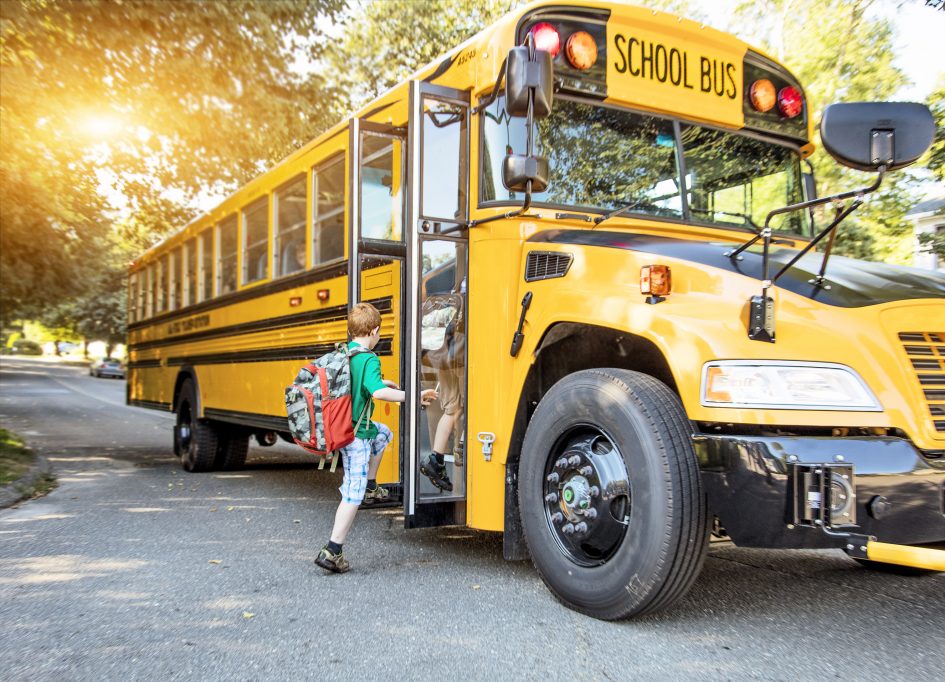A new school year is the beginning of something special. Another year for students to learn and grow, meet new friends and reconnect with the old. The excitement of new classes, teachers, school supplies, and maybe even a new school can leave family life hectic as summer draws to an end. While planning for the return to school, it’s important to remember some key tips that will keep them safe and healthy.
Pedestrian Safety
Unfortunately, too many kids are not getting to school and back safely. In fact, every day in the U.S., more than 40 kids are hit by a vehicle while walking. That’s more than 15,000 children injured each year.
Safe Kids Worldwide provides seven tips to help avoid pedestrian accidents:
- Do not be distracted while crossing the street; remember “phone down, head up” when walking.
- Do not cross if there is no designated cross walk. Take the extra time to go to a designated crosswalk, usually at the corner.
- Be alert when it is dark out, and make sure drivers are able to see you. If possible, walk with another student and wear reflective clothing.
- Look left, right, left before crossing at intersections. Be aware of cars that may be turning.
- Walk on sidewalks or paths if possible. If sidewalks are not available, walk facing traffic as far away from vehicles as possible.
- Watch for cars backing up in parking lots and driveways.
- When crossing a street with multiple lanes, pause at each lane to guarantee each car is stopped.
Sharing the road with pedestrians is crucial for keeping everyone safe. Children and their parents may walk or bike to get to school. Always look for and respect crossing guards who are working to keep your children safe. The National Safety Council has various tips for sharing the road during the school year:
- When you are dropping children off, do not double-park and avoid unloading children across the street from the school. If possible, carpool with neighbors to reduce the number of vehicles at the school.
- Here are a few precautions to keep pedestrians safe:
- Do not block the crosswalk when stopped at a red light or waiting to turn.
- Look for school zone flashers and signs and obey the speed limit.
- ALWAYS stop for a school patrol officer or crossing guard holding up a “STOP” sign.
- Take extra care to look for children in school zones.
- Never pass a vehicle stopped for pedestrians.
3. Exercise proper caution when you are near a school bus. If the yellow or red lights are flashing and the stop arm is extended, traffic must stop. Stop far enough behind the bus for children to safely enter and exit the bus.
4. Be vigilant when looking for bikers. Watch for bikes coming from driveways or behind parked cars. The most common problem is a driver turning left in front of a biker. Be cautious at intersections.
Backpack Safety: Lighten the Load
The American Chiropractic Association recommends a backpack should weigh no more than 10 percent of a child’s weight. For example, if your child weighs 80 pounds, their backpack should weigh no more than 8 pounds. If they’re 90 pounds, it should be no more than 9 pounds, and so on. Backpacks that are too heavy can cause problems, such as back pain, shoulder pain and poor posture. Some kids wear their backpack on one shoulder; make sure to stress to your child the importance of wearing both shoulder straps to distribute the backpack weight evenly.
When your child is selecting a backpack, provide some guidance and look for the following:
- An ergonomic design
- The correct size: no wider or longer than your child’s torso and never hanging more than 4 inches below the waist
- Padded back and shoulder straps
- Hip and chest belts
- Multiple compartments to better distribute the weight
- Compression straps on the sides or bottom to stabilize the contents
Stranger Safety
Lastly, talk to your kids about being aware of their surroundings at all times. If someone’s actions appear to be “out of the ordinary,” you or your child should report the incident to school administration or police officials. Being vigilant and aware of surroundings is a life lesson that can be carried into adulthood. Have regular safety discussions with your children as they reach different stages in their adolescence. For younger children, identify strangers and examples of adults your child can go to if there is a problem (e.g., teachers, principals, etc.). The start of the school year is a great time to go over these precautions with your children.
Asset Health wishes you a safe, healthy and happy school year!
https://www.safekids.org/sites/default/files/pedestrian_infographic.pdf
https://www.nsc.org/home-safety/seasonal-safety/back-to-school/drivers
https://www.acatoday.org/Patients/Health-Wellness-Information/Backpack-Safety
https://www.consumersafety.org/news/safety/send-your-kids-back-to-school-in-safety/


September 2, 2018 at 1:19 am
This was a great reminder and how we can keep our kids safe.